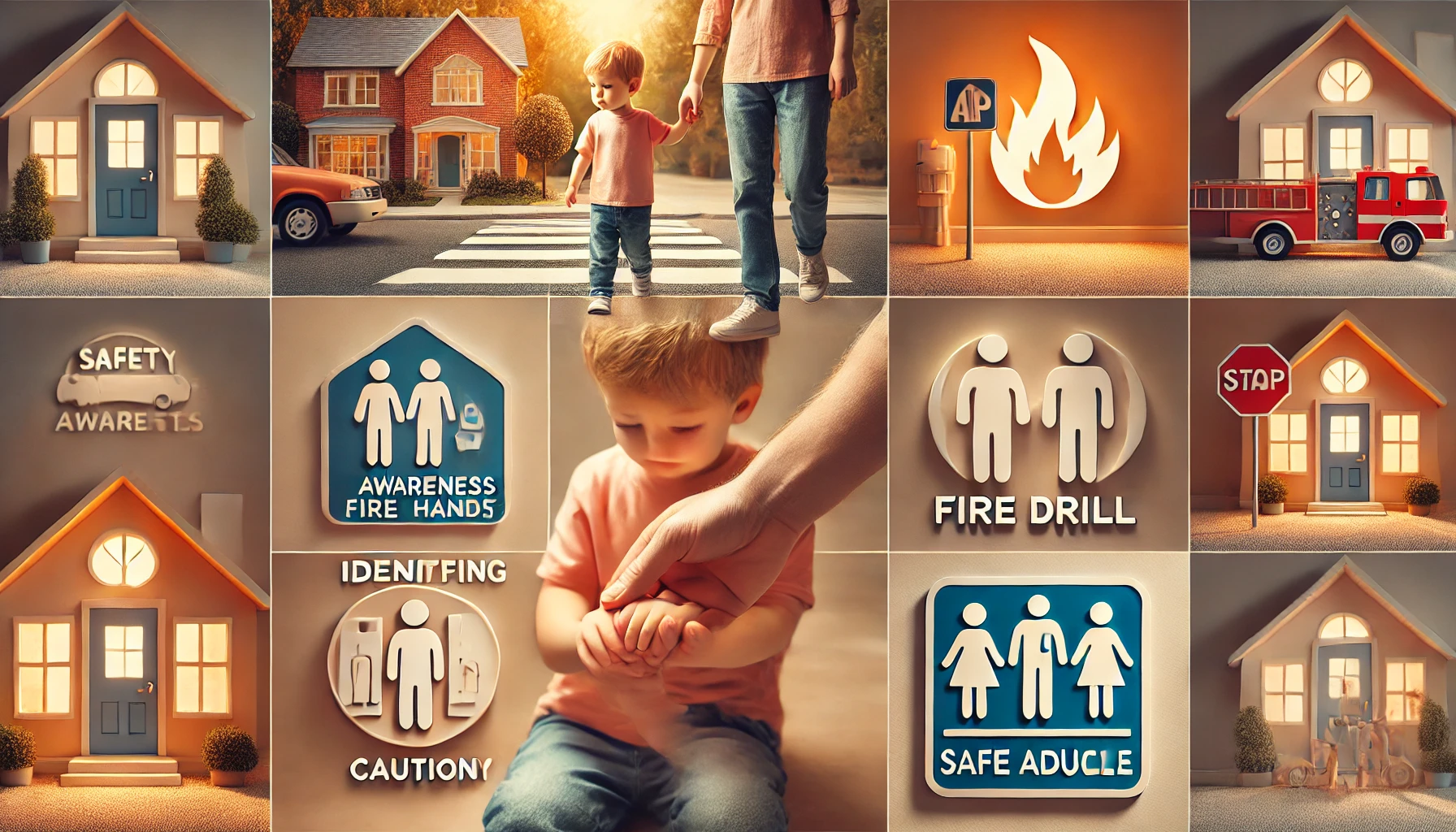How to Teach Young Children About Staying Safe in Different Situations
Teaching young children about safety helps them develop awareness, confidence, and the ability to make smart choices in different situations. By learning basic safety rules, children can protect themselves at home, in public places, and online. Parents can teach safety through role-playing, storytelling, and consistent reinforcement. In this article, we’ll explore practical ways to help children understand and practice staying safe.
Why Teaching Safety is Important
- Builds awareness – Helps children recognize safe and unsafe situations.
- Encourages independence – Teaches kids how to make smart choices on their own.
- Prevents accidents – Helps children learn how to avoid dangers.
- Strengthens problem-solving skills – Encourages kids to think before acting.
- Increases confidence – Helps children feel secure in different environments.
1. Teach Kids Their Full Name, Address, and Parent’s Phone Number
Knowing basic personal information helps children seek help if they ever get lost.
Activity Idea:
- Practice repeating their full name, home address, and a trusted adult’s phone number.
- Turn it into a memory game, where they recall and say their information out loud.
- Create a safety card with their details to keep in their backpack.
What Kids Learn:
- That knowing their information helps them stay safe.
- How to communicate with a trusted adult if needed.
- The importance of remembering key details about themselves.
2. Teach Kids to Stay Close and Ask for Help in Public Places
Helping children understand how to stay safe in public prevents them from wandering off.
Activity Idea:
- Practice holding hands or staying within arm’s reach in crowded places.
- Teach kids to identify safe adults (security guards, store employees) in case they get lost.
- Role-play what to do if they can’t find their parent: “Stay where you are and call for help.”
What Kids Learn:
- That staying close to a trusted adult keeps them safe.
- How to ask for help in public if they feel lost.
- The importance of being aware of their surroundings.
3. Set Rules for Talking to Strangers
Teaching kids how to interact with strangers safely helps them make good choices.
Activity Idea:
- Teach kids the “No, Go, Yell, Tell” rule if a stranger makes them uncomfortable.
- Explain the difference between “safe strangers” (police, teachers) and unknown people.
- Role-play different scenarios, like what to do if a stranger offers them a ride or a gift.
What Kids Learn:
- That they should never go anywhere with someone they don’t know.
- How to recognize and respond to unsafe situations.
- The importance of telling a trusted adult if something feels wrong.
4. Teach Kids About Road and Traffic Safety
Helping children understand how to stay safe near roads prevents accidents.
Activity Idea:
- Practice looking left, right, and left again before crossing the street.
- Use a toy car and pedestrian game to teach safe walking and crossing habits.
- Teach the meaning of traffic lights and pedestrian signals.
What Kids Learn:
- That roads can be dangerous and require caution.
- How to safely cross streets and obey signals.
- The importance of paying attention near moving vehicles.
5. Set Clear Home Safety Rules
Creating a safe home environment helps prevent accidents.
Activity Idea:
- Teach “Stop, Drop, and Roll” for fire safety.
- Make a list of off-limits items, like electrical outlets, sharp tools, and cleaning supplies.
- Role-play what to do in an emergency, like calling 911 or finding an adult.
What Kids Learn:
- That home safety rules prevent accidents.
- How to respond to emergencies calmly.
- The importance of asking for help with dangerous items.
6. Teach Kids About Online Safety
As children begin using technology, they need to learn how to stay safe online.
Activity Idea:
- Explain that personal information should never be shared online.
- Use kid-friendly internet rules, like only using approved websites.
- Teach the rule: “If someone online asks for personal info, tell a parent right away.”
What Kids Learn:
- That not everything online is safe.
- How to protect their personal information.
- The importance of asking a trusted adult before clicking on links or chatting with strangers.
7. Practice Safety Drills Together
Helping children practice safety drills prepares them for real situations.
Activity Idea:
- Do a fire drill at home, practicing how to exit safely.
- Role-play what to do in case of an earthquake or emergency.
- Teach kids a family meeting spot in case they get separated.
What Kids Learn:
- That practicing safety helps them know what to do in real situations.
- How to stay calm and follow a plan.
- The importance of preparation for different emergencies.
8. Praise and Reinforce Safe Choices
Encouraging kids when they make smart safety decisions helps build lifelong habits.
Activity Idea:
- Say, “Great job holding my hand when we crossed the street!”
- Use a “Safety Star Chart”, where kids earn stars for following safety rules.
- Ask, “How did it feel to make a smart, safe choice today?”
What Kids Learn:
- That safety habits are important and appreciated.
- How being careful helps them stay safe.
- The confidence to make good decisions in different situations.
Final Thoughts
Teaching young children about staying safe in different situations helps them build confidence, awareness, and responsibility. By practicing safety drills, setting clear rules, and reinforcing smart choices, parents can guide children toward becoming more independent while staying safe in various environments.
